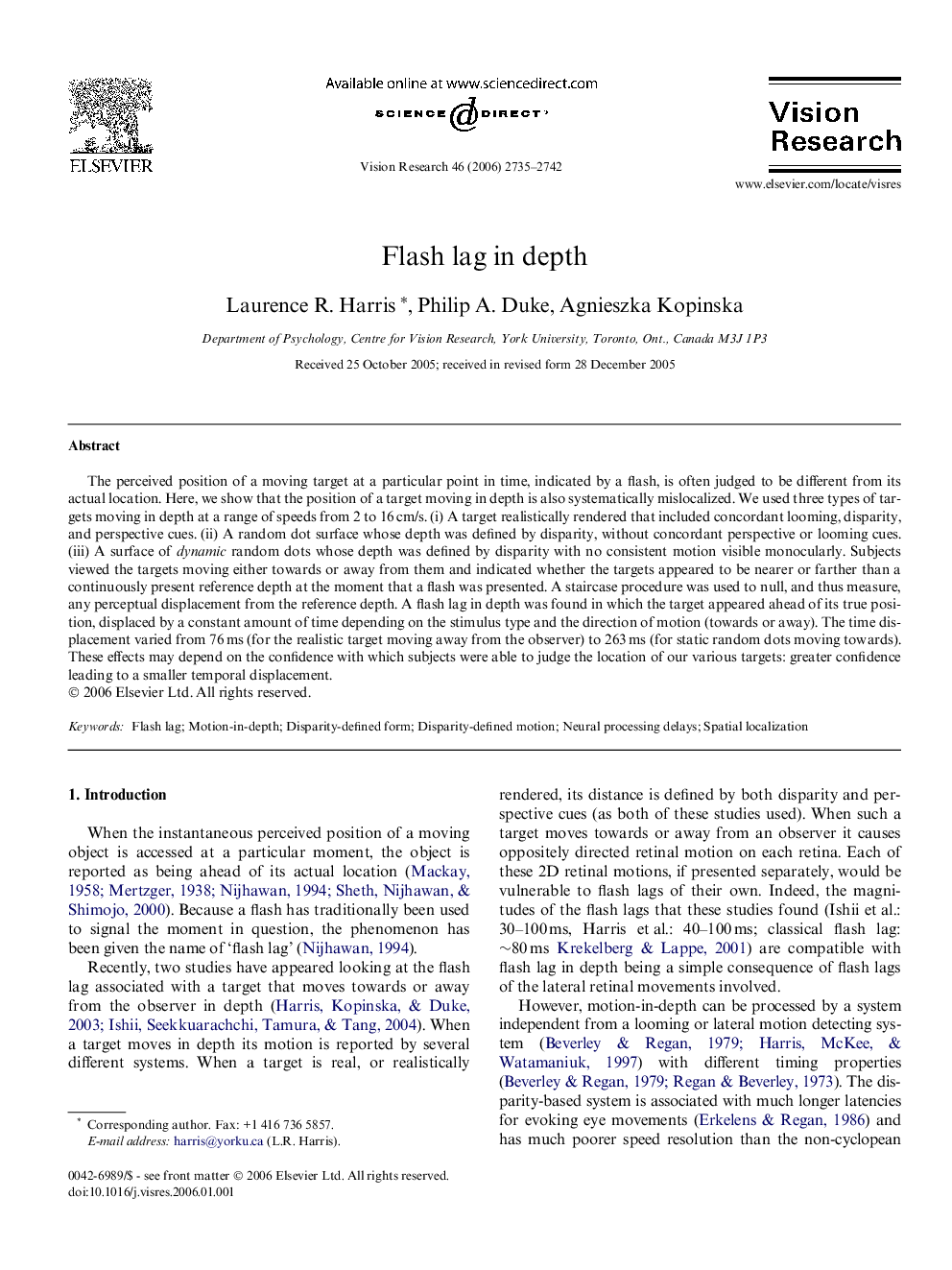| Article ID | Journal | Published Year | Pages | File Type |
|---|---|---|---|---|
| 4035597 | Vision Research | 2006 | 8 Pages |
The perceived position of a moving target at a particular point in time, indicated by a flash, is often judged to be different from its actual location. Here, we show that the position of a target moving in depth is also systematically mislocalized. We used three types of targets moving in depth at a range of speeds from 2 to 16 cm/s. (i) A target realistically rendered that included concordant looming, disparity, and perspective cues. (ii) A random dot surface whose depth was defined by disparity, without concordant perspective or looming cues. (iii) A surface of dynamic random dots whose depth was defined by disparity with no consistent motion visible monocularly. Subjects viewed the targets moving either towards or away from them and indicated whether the targets appeared to be nearer or farther than a continuously present reference depth at the moment that a flash was presented. A staircase procedure was used to null, and thus measure, any perceptual displacement from the reference depth. A flash lag in depth was found in which the target appeared ahead of its true position, displaced by a constant amount of time depending on the stimulus type and the direction of motion (towards or away). The time displacement varied from 76 ms (for the realistic target moving away from the observer) to 263 ms (for static random dots moving towards). These effects may depend on the confidence with which subjects were able to judge the location of our various targets: greater confidence leading to a smaller temporal displacement.
